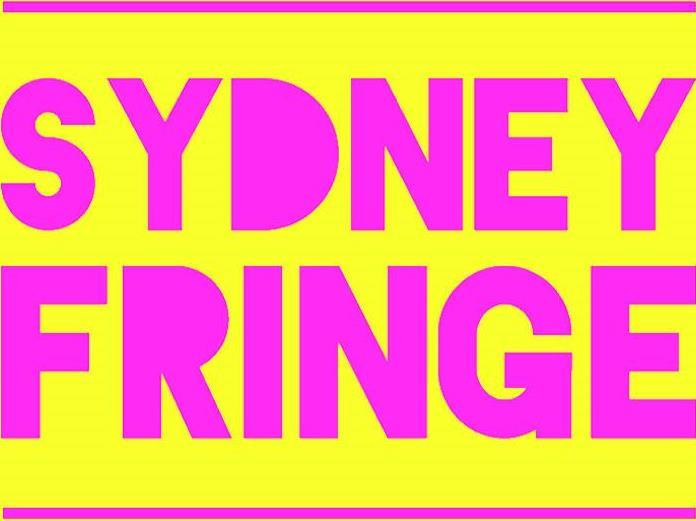Seen & Heard Festival showcases short films made by women which challenge a panoply of political issues including race, class, disability, gender and sexuality. With the milestone of its fifth year approaching, this ‘Best of’ event at the Sydney Fringe Festival provided us with six diverse and thought-provoking films, shoring up the Seen & Heard Festival mantra that ‘films made by women are not just for women, but are films that should be seen by everyone’.
Sophie Lavoie takes us into a spare room where Sophie answers banal questions for what at first seems like a seemingly innocuous interview. Soon we realise that the interviewer is asking questions typically answered via a form prior to a HIV/AIDS screening test. The prowess in the film’s execution lays primarily in the choice of an off-screen monotone faceless voice, which creates a double-edged position for the viewer: at once empathetic as Sophie’s sexual proclivities and vulnerabilities are awkwardly laid bare, and unavoidably a voyeuristic offsider occupying the same ‘side’ as the voice (without medical licence or her consent). As Sophie’s anxiety simmers – skilfully evoked by Catherine de Léan through pauses, slight fidgets, scatty eyes – the public/ private dichotomy relating to our bodies, their treatment, and our behaviour is put into stark relief.
Two, a film of subtle provocation, takes us into a different interrogative mode, a narrative told with a documentary feel which explores the alter-ego of 50-something Julian: as adult baby April he dresses and behaves like a two-year-old child, has all the childhood accoutrements and nanny-care – and it all, oddly, seems relatively normal. The layers to April’s story are unpacked with an earnest narrative voice and elegant direction. Julian invites us into his home and provides snippets of family history, and the daily patterns that accommodate his unconventional identity: this is refreshingly his story and not some therapist’s. Cinematography (high-angled shots over cribs) and set design (musical mobiles, rocking horses) effectively convey that this lifestyle choice is one person’s way of finding safety and solace. As Julian explains, ‘often life gives you a kick … and you go scurrying back to the nursery’. The macrocosm of Julian’s comfort fetish throws a unique lens on how one finds their safe spaces in adulthood.
After the Class and The Pool Party, both Iranian films, present us with poignant questioning of defined roles and cultural and societal expectations.
In After the Class, Muslim mother and teacher, Mrs Ansari, is caught off-guard by her daughter’s announcement that she is moving out with a friend. Mrs Ansari patronisingly insists that her daughter forget about this subversive action, finish university and find a husband before she makes house; after all, she is scarcely capable of keeping her room tidy. As filial disagreement takes place, the film’s script teases individual interpretations of independence and how cultural, gender, and familial expectations can sway one’s agency or lack thereof.
Pool Party introduces us to the life of Khani, an aged servant, who not only has to refurbish a pool for his employer’s daughter in record time, but serve as counsel and surrogate father. Themes of slavery and exploitation, and the wear that one individual soul can take, are central to this allegorical tale. Hands and feet become apt motif sites: in one sequence of edited scenes we are provided a close-up shot of Khani’s red raw hands after witnessing him vigorously scraping old bits of pool surface, followed by a like scene set up with a high wide shot of him repainting, then a close-up of blue paint on his hands standing in as blood. When Khani realises his work is all a bit of sport to be had by the wealthy family who employs him, he thankfully puts his own stamp on matters.
Hush and 13 Related Sewing Machines, the shortest films in the line-up, take us into the private lives and occupations of females. Hush guarantees high-spirited laughs from viewers as it takes us into the ordinary household of two Aboriginal women who innocently tease one another about the ‘scandal’ of reading magazines featuring muscled male pin-ups. In the instant their telephones ring, they become phone-sex workers, hamming it up raucously.
13 Related Sewing Machines, a montage of 13 women working away at different sewing machines, provides a compelling audio narrative – with the variant sounds of the needle hammer, pauses, adjusting material and machine controls – that comments on the invisible work of women. Interestingly, the film’s editing and audio track imbue the film with an advertisement-like quality.
The short films curated for this ‘Best of’ event, individually and collectively display the capacity for avant-garde and experimental film to subvert, interrogate, and provoke audiences as they challenge and question the core values that shape our individual and cultural identities and the way we perform our roles.
Rating: 4 stars out of 5
Seen & Heard Festival: The Best Of
Newtown Hotel, Newtown
26 September
Sophie Lavoie
By Anne Émond
Canada, 9mins
Two
By Maya Newell
Australia/UK , 17mins
After the Class
By Fereshteh Parnian
Iran, 9mins
The Pool Party
By Sara Zandieh
Iran/US, 14mins
Hush
By Dena Curtis
Australia, 5mins
13 Related Sewing Machines
By Anna Linder
Sweden, 5mins
Sydney Fringe
2013.sydneyfringe.com
6-29 September





